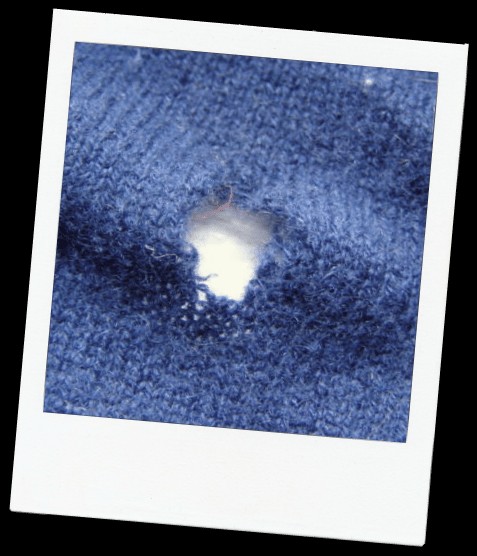Moths, particularly clothes moths, can be a nightmare for homeowners. These tiny pests can cause significant damage to your favorite garments, delicate fabrics, and even valuable textiles around your home. Spotting those telltale holes in your wool sweaters or finding moths fluttering around your closet is a sign you need to take action. London, and many other urban areas, have seen a rise in moth infestations, making it more important than ever to know how to effectively get rid of these unwanted guests and protect your belongings.
Clothes moths, specifically the Webbing Clothes Moth, are attracted to natural fibers like wool, silk, cotton, and even fur. They thrive in dark, undisturbed areas such as closets, drawers, and attics. It’s not the adult moths themselves that cause damage, but their larvae. These larvae feed on the keratin in natural fibers, leaving behind holes and weakened fabric. Beyond clothing, moths can also infest books, papers, and photographs, putting your precious memories at risk.
Prevention is the First Line of Defense
The best approach to getting rid of moths is to prevent infestations in the first place. Here are some key preventative measures:
- Deterrents: Natural deterrents can be highly effective. Lavender bags and cedarwood are popular choices that moths dislike. Place these sachets or cedar blocks in closets and drawers. While mothballs are very effective, their strong odor can be unpleasant and they contain chemicals, so consider natural alternatives first. Replace deterrents every six months to maintain their effectiveness.
- Regular Cleaning: Spring cleaning isn’t just a tradition; it’s a crucial step in moth prevention. Empty out closets and drawers regularly and thoroughly clean all surfaces. Moths prefer to breed in undisturbed areas, so moving furniture and cleaning underneath can disrupt their life cycle.
- Sunlight and Air: Sunlight is a natural enemy of moth eggs and larvae. Whenever possible, take rugs, carpets, and even clothing items outside for airing and exposure to sunlight. Beating rugs and carpets can also help dislodge eggs and larvae.
- Vacuuming: Regular vacuuming, especially in areas prone to moth activity like closets and under furniture, is vital. However, it’s crucial to change your vacuum cleaner bag frequently. A used vacuum bag can become a breeding ground for moths if eggs are sucked up and left to hatch inside.
Dealing with an Existing Moth Infestation
If you’ve already discovered a moth infestation, don’t panic. Here’s how to tackle it:
- Pheromone Traps: Pheromone moth traps are a non-toxic way to disrupt the moth breeding cycle. These traps contain pheromones that attract male moths, trapping them on a sticky surface. This reduces the number of males available to mate, helping to control the population. Traps also serve as an indicator of the severity of your moth problem.
- Thorough Cleaning: Similar to prevention, thorough cleaning is essential when dealing with an active infestation. Empty all affected closets and drawers. Wash or dry clean all clothing items, especially those made of natural fibers. For items that can’t be washed, consider placing them in a freezer for at least 72 hours to kill eggs and larvae.
- Inspect and Clean Carpets and Rugs: Moths can also infest carpets and rugs. Vacuum thoroughly and consider using a carpet cleaning solution.
- Professional Help: In severe cases, or if you are struggling to control the infestation yourself, consider contacting a pest control professional. They can offer more intensive treatments and advice tailored to your specific situation.
Storing Fabrics and Clothes to Prevent Moths
Proper storage is key to protecting your fabrics and clothes long-term:
- Airtight Storage: For valuable or seasonal items, airtight storage is highly recommended. Vacuum storage bags are effective in preventing moth access. While plastic storage has been debated due to potential fumes affecting delicate vintage fabrics, the protection against moths often outweighs this concern. For extremely delicate items, consider acid-free tissue paper within plastic containers or breathable cotton garment bags.
- Clean Before Storing: Always ensure clothes and fabrics are clean before storing them. Moths are attracted to food stains, body oils, and perspiration on clothing. Washing or dry cleaning items before storage removes these attractants.
- Consider Space-Saving Solutions: If space is limited, utilize storage solutions that maximize space while protecting your items. CD storage towers can be repurposed for storing smaller fabric pieces, ensuring they are visible yet contained. Wardrobe systems with customizable drawers and compartments, like the Antonius system from Ikea, can help organize and protect your clothing and fabric collection.
By implementing these preventative measures and acting swiftly if you discover an infestation, you can effectively get rid of moths and protect your clothes and home from these destructive pests. Regular vigilance and proactive cleaning are your best defenses against the persistent threat of clothes moths.

